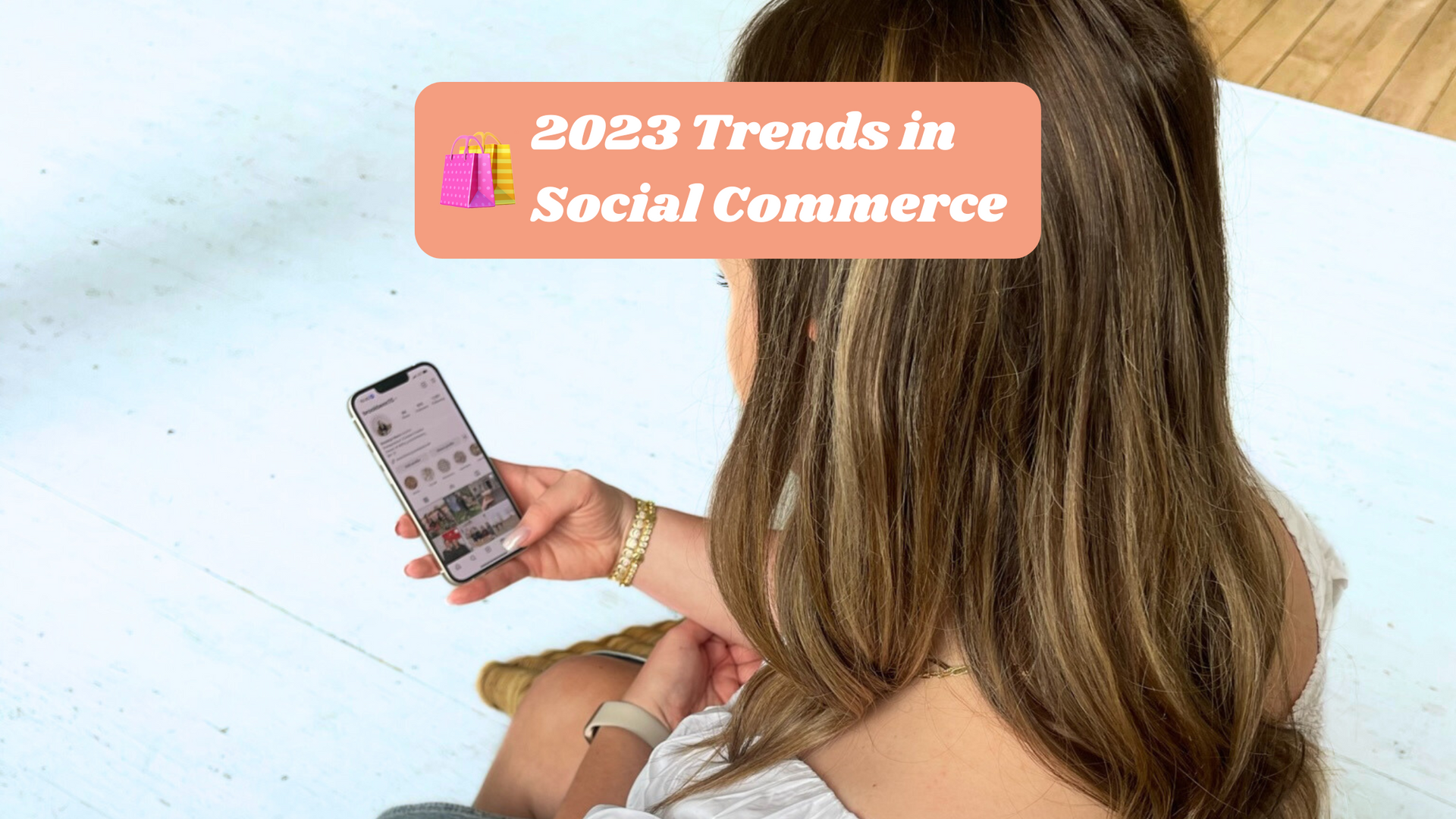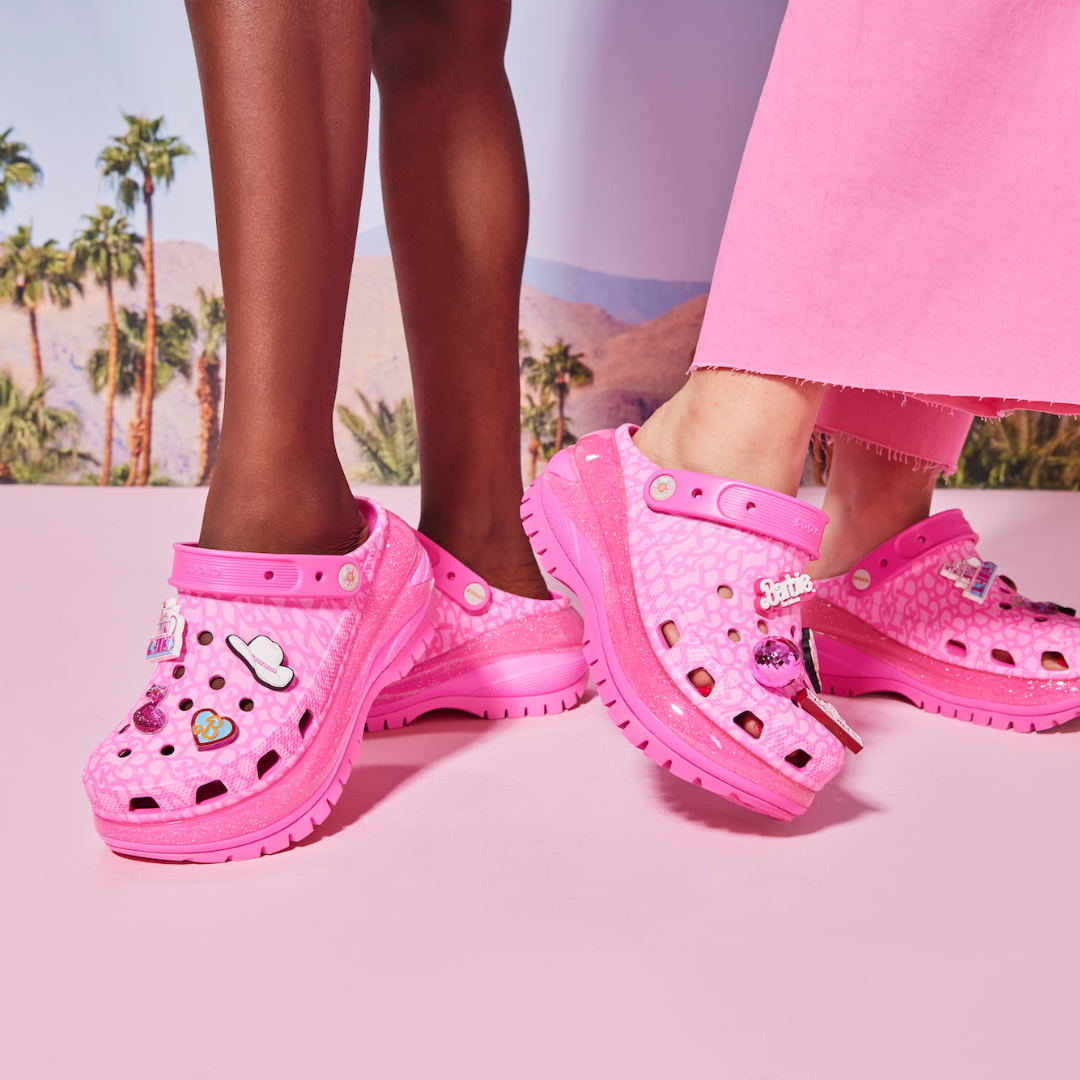2023 Trends in Social Commerce

The way consumers interact and engage with brands has shifted dramatically over the past few years.
Pre-2020, there was already a notable move toward online shopping over the traditional brick and mortar experience. This shift was solidified throughout the pandemic, with many businesses prioritizing e-commerce to stay afloat. What they found during the return to in-person shopping was the processes they put in place as a lifeline for their business were here to stay.
Shift to E-Commerce: A Case Study
At the beginning of the pandemic, a retail clothing store in Sudbury had to shift to e-commerce in order to stay open during the shutdown. The retailer previously focused on in-person sales. We created a digital marketing strategy that included social media ads and email campaigns to reach consumers beyond their local service area. With this strategy in place, over $28,500 was generated from email marketing campaigns. There was an increase of 68% in sales. The business also brought in over $10,000 from a single social media ad in 2020. Recently, there were over 290 purchases from the website on a single ad.
Now, there’s no denying that most people prefer to be e-commerce consumers. This means that brands have to step up to create an online experience that keeps consumers coming back. It’s not as simple as having an online store or creating stunning posts. E-commerce has to exist as part of a fully built out digital ecosystem that is engaging, educational and inspiring to customers.
Shopify released their
2023 Social Commerce Trends report, which explores a number of areas of consumer behaviour and online shopping trends. Keep reading for our key takeaways.
Focus on ESG
As behaviours change, so do the expectations that consumers have for the brands they choose to engage with. Before the rise of e-commerce and social media shopping, consumers typically chose a brand or store they liked and stuck with it. Now with information and competitor brands instantly accessible, consumers are more aware of the impact that the products they use have on the world around them. They want to know how their favourite brands feel about things like social issues and the environment. Buyers want to support more ethical business practices and sustainable supply chains. They will switch from their favourite businesses to a similar one that is more aware of their ESG impacts. With this in mind, it’s important for you to highlight what your brand stands for and what you do to support the communities where you operate.


The Shopping Experience
E-commerce, similar to brick and mortar shopping, is all about the experience. The difference is, with e-commerce, consumers want immediacy. When shopping online, consumers want to be able to find what they’re looking for quickly and easily. Think about website layouts, impactful posts and engaging video content on social media.
Part of that experience is the desire for immediate responsiveness. Consumers want clear and accurate information quickly. Since late
2022, there has been a rise in consumers reaching out to brands online through Whatsapp, Facebook Messenger and Instagram DMs. They want high-value everywhere they shop. However, for many businesses, having round-the-clock customer service available on these apps isn’t feasible. Here, we see the rise of chatbots in e-commerce. For the
41% of consumers who reportedly want live chat support while they shop online, chatbots allow them to ask simple questions and get immediate responses. Chatbots can be programmed by brands to capture your brand voice so they are more authentic and less robotic. 🤖
Utilizing Social Media Shopping Tools
Discovering new brands is easier than it’s ever been.
60% of the world is on social media and
7 out of
10 consumers like the convenience of purchasing products directly from where they’re browsing. This means if you’re not using platforms like Pinterest, Instagram and TikTok, you’re missing out on a huge segment of your consumer base. Social media reduces the friction that can exist between discovery and conversion. The added step of going to a store, or even finding an external link is eliminated when you use tools like Instagram Shopping and product tagging. Social media platforms can become a one-stop shop for discovery, consideration and conversion without your consumers ever having to leave the app. This is a huge advantage for a seamless user experience that can help you increase sales and improve customer loyalty.


The Obstacle of Third-Party Data
In a time where more people are online than ever before, there is also an increasing demand for better privacy and protection for consumer data. Already, Apple and Mozilla (FireFox) have done away with third-party cookies, with Google expected to follow suit in 2024. When Apple started letting its customers opt in or out of data tracking, advertisers lost approximately 30% accuracy on targeting. What does this mean for brands? It’s getting harder to target a customer’s already limited time and attention, and the advertising tools brands rely on for data are becoming less dependable. Without third-party data tracking, it’s harder for brands to reach their target audience, generate traffic, and measure the efficacy of their efforts.
How do you get around this? Brands are starting to collect first-party data that they have ownership over. This data is collected from your own audience, whether that is social media followers, website visitors or customers. To collect first-party data, you can add tracking pixels to your website, products and social media profiles that collect details about behaviours and actions of your consumers. You can also collect first-party data through customer surveys and polls. First-party data can be used effectively to retarget ads, improve the customer experience, and create a better sales process.
Focus on Collaboration
Brand Collaborations: Brands have always been good at collaborating with other brands for a mutually beneficial relationship. Think about concert venues. This shift didn’t necessarily move as seamlessly into the world of e-commerce. But, as reaching new audiences becomes more difficult, there is a renewed emphasis on Brand-to-Brand collaboration. By partnering with one or more brands to create a product or program, you all benefit from getting your product in front of additional audiences. Think about products like the Fab, Fit, Fun Box which sees numerous businesses contribute their top performing products to a quarterly subscription box. These partnerships get countless brands in front of consumers, giving each business the opportunity to reach new customers.
You can also consider brand collaborations like special products to market movies. The Barbie movie recently collaborated with brands including Smash + Tess, Burger King, JoyBird, Tangle Teaser, Crocs, Fossil, Forever
21, and more. While the Barbie movie itself didn’t need any help with their marketing, by creating collabs with the countless brands they partnered with, it provided the businesses with the opportunity to offer a product to an established audience who may not have considered shopping from them before.


Creator Collaborations: Consumers want to see products in action. They’re not willing to simply take a business’ word for it anymore. Around
33% of consumers consider influencer recommendations more important than recommendations from family and friends. And while influencer marketing is expected to become more prevalent in the future, user-generated content is 8.7 times more impactful than influencer content. There is a general consensus, especially among younger consumers, that UGC is more authentic than influencer marketing. Reviews, photos, videos, blog posts, comments and shares are considered more authentic than brand and influencer-produced content. And consumers love to feel like they are part of something. By sharing UGC on your social media platforms and website, you give consumers the opportunity to find something authentic and relatable in your brand and products. This creates trust and deepens a relationship that is more difficult to maintain in a digital world with countless options and fast information.


It’s no doubt that we are living in a digital era shaped by unprecedented changes in our society. The retail landscape has gone through a dramatic shift, triggered by the pandemic and sustained through an overall change in lifestyle and preference. Now more than ever, brands have to focus on how their online presence impacts their consumers’ behaviour. E-commerce needs to be part of a fully developed and maintained digital ecosystem that takes consumer habits and changes in online policy into consideration. By being proactive in our increasingly digital society, brands can take advantage of tools like first-party data collection, brand collaborations, and UGC and influencer marketing. This will help you come out on top in the world of social commerce to maintain and grow your consumer base online.





